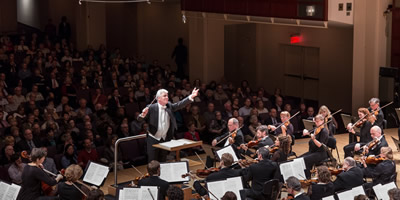The Kontras Quartet began its second season as String Quartet-in-Residence at the Western Piedmont Symphony with the first Chamber Classics Concert of the 2011-12 Season at the Catawba Valley Arts and Science Council Center. The program’s theme was loosely based on “Impressions,” and the quartet’s members, Dmitri Pogorelov and Francois Henkins, violins, Ai Ishida, viola, and Jean Hatmaker, cello, made a wonderful impression on the audience, and with good reason.
Opening the concert was String Quartet in G, K.387, by Wolfgang Amadeus Mozart (1756-91). This is the first of six “great” quartets that Mozart wrote that reflected Franz Joseph Haydn’s influences. Haydn was the developer of the present form of the classical string quartet, and at that time the master of their composition. Mozart dedicated the six quartets to Haydn, hoping to make a good “impression” on the master, a feat in which he succeeded, as was evidenced by a later letter Haydn wrote to a friend.
The quartet is in the standard four movements, all rich in content and development, with the final movement being a remarkable fugue, full of modulations and chromatic figures. To say that the playing was impressive would be an understatement. The performance was full of life, clean, crisp, and vibrant. I could not help thinking as I was listening that I have recordings of this work by seasoned quartets whose performance is not as good, or as interesting.
Benjamin Britten (1913-76) wrote his “Three Divertimenti” for string quartet in 1933 while he was still in school studying composition. The three sections were originally designed as a series of portraits of school friends, perhaps in order to “impress” them. He revised and renamed the parts March, Waltz, and Burlesque prior to their debut performance in 1936. The audience at that first performance was not impressed however, and Britten wrote in his diary that it was received with “sniggers and cold silence.” Consequently, he withdrew the pieces, and they were not to be released until after his death 40 years later.
The March is a driving processional, and is followed by a more lyrical Waltz. The final Burlesque is a perpetual motion of energy and virtuosity. This performance was greeted not with silence but with cheers and applause, as the Kontras Quartet demonstrated that they could make this very difficult (both to play and, for some, to hear) music delightful and coherent, and thoroughly enjoyable.
The evening concluded with that great “impressionistic” work, the String Quartet in F by Maurice Ravel (1875-1937). Ravel, like his contemporary Claude Debussy, disliked having his work described as impressionistic, although their string quartets did not adhere to the classical quartet structure. Ravel dedicated his quartet to his teacher, Gabriel Fauré. However, Fauré was not impressed, and advised him to revise the final movement. Debussy, on the other hand, told him not to touch a single note. The premiere performance brought a favorable reaction from critics and audience alike.
One of the marks of a memorable performance is the ability of the performers to present a piece as something different from all of the other performances people have heard. The Kontras Quartet achieved this goal with great success. All of the musical lines, but especially the inner voices of the second violin and viola, sang out with clarity and sheer beauty. The rich and spirited playing was welcomed by the audience with cheers and a standing ovation.
With tonight’s performance, it is evident that the Kontras Quartet has worked hard and has become a tightly crafted and beautiful instrument.
The Kontras’ series in Hickory resumes December 10. For details, see our calendar.












